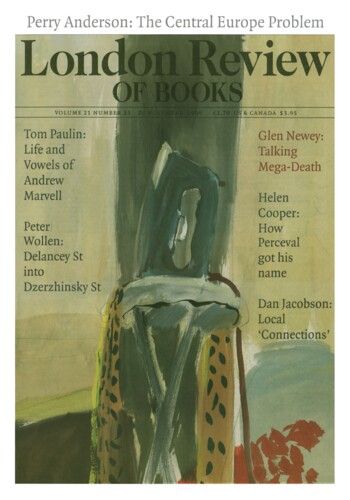Down to the Last Flea: resurrecting the mammoth
Richard Fortey, 23 May 2002
In 1901, a frozen mammoth’s penis was discovered on the Berezovka River in Siberia. The organ was erect, nearly three feet long and, having been flattened in the icy tundra, eight inches in diameter. The mammoth’s testicles, equally frozen, were tucked inside the overlying carcass. The meat was dark and marbled, like properly hung beef. Otto Herz and Eugen Pfizenmayer, who made...





